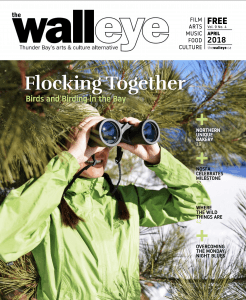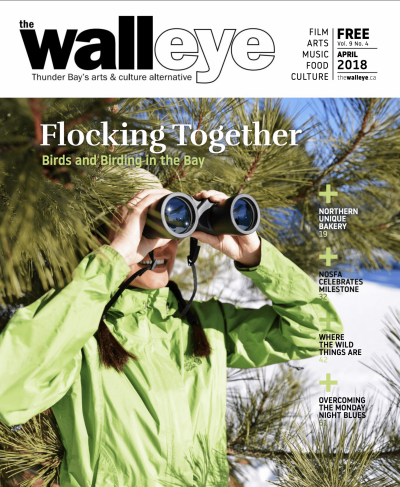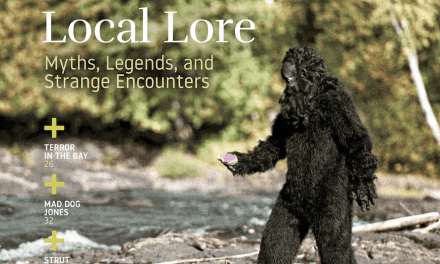Of a Feather
My introduction into the world of birding came when my wife and I were living in Alaska. We had met a birder by the name Ann who had driven her RV up from California to spot some of the region’s unique and beautiful birds. With a shared love for the locally brewed Red Knot Scottish Ale, we bonded quickly and Ann took us under her wing (sorry, I can’t resist) and introduced us into the world of birding. I was a novice and my first lesson was differentiating a bird call from a squirrel call. Soon after, we quickly fell in love with birding. It was an inexpensive hobby (we were broke at the time), a great source of exercise, and it got you outside.
 Every April we present our annual Green Issue in honour of Earth Day, and this year we’re focusing on birds, birding, and all things bird-related. Not only is birding a great way to commune with nature, but birds are one of the most important indicators of the health of our environment. As part of our cover story, Emma Christensen writes about the Thunder Cape Bird Observatory, a joint project that tracks population trends, specifically in bird species that breed in remote areas further north. From Mexican hummingbirds to Baltimore orioles, we talk to some birders about the lengths they have gone to spot certain species and their love for the hobby. Also, birder and wildlife biologist Brian Ratcliff provides us some figures for our bird infographic, we chat with a local birdhouse builder and birding photographers, and find out about the relationship between our feathered friends and farming.
Every April we present our annual Green Issue in honour of Earth Day, and this year we’re focusing on birds, birding, and all things bird-related. Not only is birding a great way to commune with nature, but birds are one of the most important indicators of the health of our environment. As part of our cover story, Emma Christensen writes about the Thunder Cape Bird Observatory, a joint project that tracks population trends, specifically in bird species that breed in remote areas further north. From Mexican hummingbirds to Baltimore orioles, we talk to some birders about the lengths they have gone to spot certain species and their love for the hobby. Also, birder and wildlife biologist Brian Ratcliff provides us some figures for our bird infographic, we chat with a local birdhouse builder and birding photographers, and find out about the relationship between our feathered friends and farming.
One thing I learned from Ann about the history of birding was that ancient Romans believed the flights and calls of birds could foretell the future. After doing research for this issue I’ve come to conclusion that the Romans had the right idea, as modern science still uses birds as a kind of oracle. In the words of famous naturalist Roger Tory Peterson: “Birds are indicators of the environment. If they are in trouble, we know we’ll soon be in trouble.”
-Adrian Lysenko















